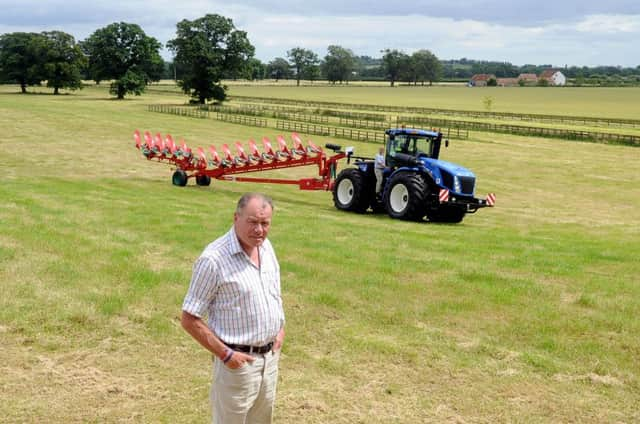Behind the scenes at the home of Ryedale Show


For years Ryedale and Pickering Lyth Agricultural Society alternated the grounds of its show between the towns of Helmsley, Kirkbymoorside and Pickering but in the 1960s it settled at what today is the home of Johnny and Rosie Shaw at Welburn Manor - what was the Kirkbymoorside tri-annual venue.
Johnny farms around 2,000 acres on a long, thin estate and runs cattle, but he’s better known for being one of North Yorkshire’s farming pioneers in the use of precision farming for his crops. The show takes place just before his harvest season begins.
Advertisement
Hide AdAdvertisement
Hide AdWhile Rosie has a major involvement as chief horse steward for the show Johnny confesses that his involvement is comparatively small. His attentions are more geared to harvest and the yields and quality of his corn, but it doesn’t mean he’s oblivious to the work put into the show.
“It never ceases to amaze me that there’s nothing here at all until the week before the show and then this place is transformed. It’s all run by voluntary help with the young farmers and the local farming community making sure it’s all in order. They do a wonderful job.
“Even when the showground has turned into a quagmire when we get rain it soon returns to normal six weeks later.”
Johnny grows 1,100 acres of arable crops with half of it down to wheat. “We grow feed group 4 wheat and this year we have Grafton, an early driller; Dickens; and a new soft group wheat called Leeds. Everyone rushed into the likes of Santiago, Oakley and Kielder but whilst they might offer good bushel weight they have yellow rust disease problems. The key determinant for going with Leeds was its bushel weight.
Advertisement
Hide AdAdvertisement
Hide Ad“Our land is moderately heavy and I will be disappointed if we don’t achieve 3.5 tonnes per acre this year. The remaining arable acreage is taken up with winter and spring barley, winter and spring oats; and 80 acres that we let out for potatoes.
“My spring barley varieties are Propino and a new one called Sanette. Our oats go to Morning Foods in Crewe. I’ve given up on oilseed rape this year after 15 years. We had 170 acres of it last year but when I looked at it with the neonicotinoids ban coming up I saw that although we have had three or four belting years in that time we also had two complete failure years and the rest were just wiping its face.
“Prior to spring cropping we had covers crops of forage rye, winter vetch and two different types of radish. They were a nitrogen fix that increased the soil’s organic matter and decreased the incidence of blackgrass. They also had the added benefit of holding the fox and pheasant.”
Johnny has been a chief protagonist for the use of precision technology for some time.
Advertisement
Hide AdAdvertisement
Hide Ad“We are still using the Yara N sensor and we now have everything on variable application from seed rates to liquid fertilisers. We’re now using an RTK base station and we’re getting as close as 2cm accuracy with a 30ft header. We’ve been yield mapping for over 20 years and although we didn’t really understand it fully back then we do now.
“We have 60 suckler cows that are put to a Limousin bull with heifers being sold as stores at 14-15 months and steers at two years through Malton livestock market.”
Johnny is the sixth generation to farm at Welburn Manor following a successful career in the armed forces where he held the rank of Major. He and Rosie have two children – son Jack who is currently working on the farm but about to spend time working on a farm in Australia; and daughter Emma who is studying textiles at Loughborough University.